Did you know that 90% of roof leaks come from bad roof installation? This fact shows how crucial regular roof checks are for safety and long life. The main aim of a roof inspection is to carefully look at the roof’s inside and outside parts.
This detailed check helps spot roof damage, find areas that need fixing, and see any weak spots. By doing a thorough check, experts make sure everything from gutters to shingles works right. This keeps the home safe from bad weather and gives homeowners peace of mind.
They also document the roof’s condition and suggest fixes. This makes regular checks key to keeping a roof in good shape.
Key Takeaways
- 90% of roof leaks are from improper installation, highlighting the need for regular checks.
- The main goal of a roof inspection is to identify roof damage and areas requiring urgent repair.
- A complete roofing system inspection ensures all parts, including shingles and ventilation, are functional.
- Regular inspections preserve roof safety and longevity by preventing potential vulnerabilities.
- Homeowners receive peace of mind and professional guidance through documented visual evidence.
Importance of Roof Inspections
Regular roof inspections are key to keeping your roof in top shape. They help spot early signs of damage before they turn into big problems. This way, you can fix small issues before they get worse.
Inspecting your roof is more than just a quick look. Experts check for both obvious and hidden damage. They look for things like nail pops, loose shingles, and problems with ventilation and flashing. Catching these small issues early can save you a lot of money and hassle later on.
Inspectors also check how well your roof can handle bad weather and seasonal changes. Regular checks are like a shield against damage from storms and other environmental factors. They keep your home safe and save you from the high costs of big repairs or even a new roof.
What is the overall goal of the roof inspection?
The main aim of a roof inspection is to keep buildings safe and sound. It helps spot roof problems early, avoiding big repairs later. Regular checks give homeowners and managers key info on their roofs. This helps prevent costly fixes and makes the roof last longer.
A thorough roof check has several main goals:
- Damage Detection: Find any damage like missing or broken shingles, leaks, or weak spots.
- Maintenance Needs: See if routine tasks like gutter cleaning and removing debris are needed. This helps avoid water damage and other problems.
- Weatherproofing: Make sure the roof can handle different weather. This keeps the building’s inside safe.
- Longevity Assessment: Check how well the roof is doing and how long it might last. This helps plan for future replacements or fixes.
The ultimate goal of a roof inspection is to give property owners the info they need for roof care. By fixing issues early, roofs work better, living spaces are safer, and property values go up.
Components Checked During an Inspection
A professional roofer looks at many important parts during a roof inspection. They check things like:
- Gutters
- Drip edge
- Starter and field shingles
- Ridge vents
- Attic ventilation
- Sheathing
- Flashings
- Rubber boots around roof penetrations
They also check the attic to see how well the roof’s underside and insulation are doing. They look for leaks, water damage, and other issues that could be a problem.
Inspectors check the shingles to see how they’re doing. They rate the roof parts as good, fair, or poor. This helps make a plan for fixing or maintaining the roof.
Benefits of Regular Roof Inspections
Regular roof inspections are key to keeping your roof in top shape. They help prevent costly repairs and keep your roof working well. By catching small problems early, you can fix them quickly, avoiding big, expensive fixes later.
Regular checks also help prevent leaks. Finding leak sources early stops mold and weak spots before they get worse. This keeps your home safe and sound.
Inspections help spot roof damage early. This means you can fix small issues before they turn into big problems. Keeping up with maintenance saves you money by avoiding early roof replacement.
Overall, regular roof inspections give you peace of mind. They make sure your home is safe and its value stays high. Knowing the benefits of roof maintenance helps you take good care of your roof.
When to Schedule a Roof Inspection
The best times for a roof check are in the fall and spring. After summer heat and winter snow, it’s key to inspect the roof. This helps spot and fix damage from extreme weather. Regular checks in these seasons keep the roof ready for the next season.
It’s also vital to inspect the roof after severe weather. Storms, hail, and strong winds can cause a lot of damage. Fixing this damage quickly helps avoid bigger problems later.
Regular checks and quick assessments after storms keep your roof in good shape. By doing this, homeowners can make their roofs last longer and save money on repairs.
Steps Involved in a Roof Inspection
Conducting a thorough roof inspection means following a detailed roofing inspection protocol. This ensures every part of the roof is checked. It covers both visible and hidden problems in the roofing system.
- Exterior Examination: The outer roof is closely inspected for signs of damage. This includes cracked or missing shingles and worn-out flashings.
- Interior Inspection: The attic is carefully checked for leaks, mold, or poor insulation. This helps spot potential issues early on.
- Ventilation Check: Proper ventilation is key for roof health. Roofers make sure vents are clear and working right.
- Gutter Condition Verification: Gutters are checked to ensure they’re not clogged or damaged. This prevents water from pooling and damaging the roof.
- Drainage System Evaluation: Roofers check for any blockages in drainage systems. This stops water from building up and causing roofing problems.
By carefully examining roofing components with these steps, a professional roofing assessment gives a full health report of the roof. It highlights areas that need repair or maintenance early on.
Common Issues Identified During Inspections
Roof inspections often find many problems that show the need for repairs. Cracked or loose shingles can weaken a roof. Also, wrong flashing installation can cause water to get in and damage the roof.
Blocked gutters are common and can lead to water buildup and roof damage. Poor ventilation traps heat and moisture, speeding up roofing problems.
Corroded flashing and nail pops are big issues too. They can let water in and cause leaks. Depressions around vent pipes can also cause water to gather and harm the building.
Spotting these problems during an inspection is key to fixing them quickly. Knowing about roof aging and damage helps plan repairs. This can make the roof last longer and avoid leaks and structural damage.
Professional vs. DIY Roof Inspections
Choosing between hiring a certified roof inspector or doing it yourself is key to your roof’s health and life. Professional and DIY methods differ a lot, mainly in expertise and safety.
Experts in roof inspections use their knowledge to find issues that might not be easy to see. They have the right tools and know-how to safely check the roof. They can spot early signs of damage and suggest the best fixes.
DIY inspections can spot obvious damage from the ground with binoculars. But, they can’t match what pros can do, especially when it comes to climbing the roof or checking inside. Trying to do these things without the right training and gear can be dangerous and might miss important problems.
Choosing a certified roof inspector means getting a more precise look at your roof’s issues. This leads to quick and effective repairs, saving you money on future fixes. With their deep knowledge and strict safety rules, pros give a detailed check of your roof’s state.
- Extensive and nuanced inspections
- Expert identification of potential issues
- High safety standards
DIY checks are good for regular upkeep, but a certified roof inspector is key for deep checks and serious repairs. Their mix of expert advice and safety makes professional roof inspections a smart choice for your home’s long-term health and strength.
Conclusion
Roof inspections are key to keeping homes safe and in good shape. They help spot problems early and prevent big repair costs. By doing regular checks, you can make sure your roof lasts longer.
Homeowners should make roof inspections a regular part of their upkeep. This way, small issues don’t turn into big ones. It’s smart to hire experts for these checks to make sure nothing is missed.
Being careful and taking care of your roof means your home stays safe and sound. A good roof care plan includes regular checks and keeping track of what needs attention. This approach makes your roof safer, stronger, and saves you money in the long run.







